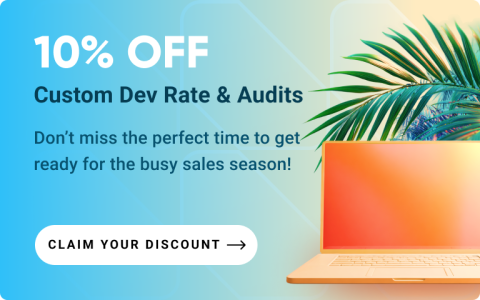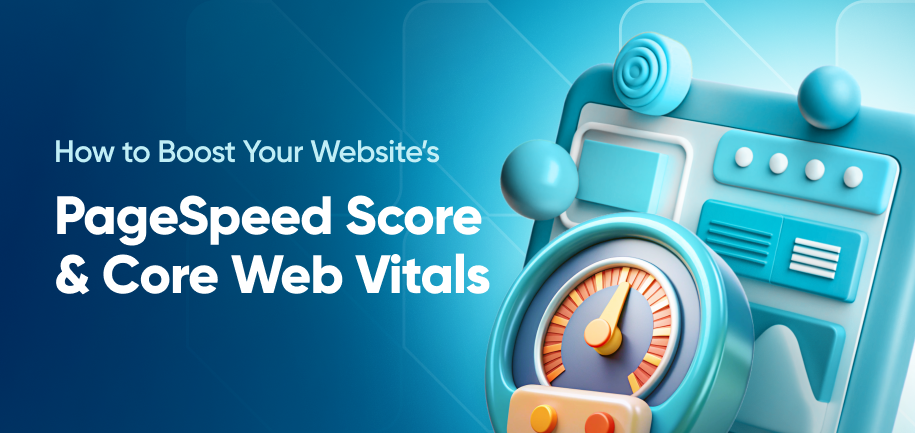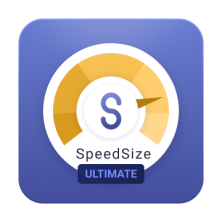In the wake of seasonal sales, Amasty and its partner SpeedSize – an AI-powered media compression platform – held an insightful 1-hour webinar on website speed optimization. Hosted by Saj Abbas, Head of Customer Success at SpeedSize, the webinar featured Amasty’s Lead Account Manager, Anna Shumeiko, and our product delivery team member, Alex Boyko.
Together, the trio discussed the importance of website speed from their unique professional perspectives and offered expert recommendations. Watch the recorded webinar in full on our channel or read some of the shared insights below.
Why Optimizing Website Speed Matters
According to Anna, optimizing website speed is one of the key e-commerce business priorities for several reasons:
- Customers demand fast-loading websites. Slow speed leads to lost sales and customer churn.
- Website speed directly influences search engine rankings, enhancing visibility and organic traffic.
- Optimized websites improve user experience, fostering trust, satisfaction, and increased conversions.
Agreeing with her, Saj emphasized the importance of sharing high-quality media, such as photoshoot-ready images and videos, without reducing website delivery speeds.
“Our philosophy at SpeedSize aligns with Amasty's approach. We believe that premium-quality media and auto-play videos are crucial for user engagement and conversion. But in no way should it compromise website performance.”
Impact on User Experience and Business Bottom Line
Following up on the idea that a swift website creates a frustration-free user journey, Anna added that it’s what all customers expect from every e-commerce website today. When visitors can find what they are looking for as quickly as possible, stores get longer session times and increased interaction, which translates into higher conversion rates, better search engine rankings, and boosted sales and revenue.
Anna also stressed that a faster, user-friendly website holds a significant advantage over competitors and is much more capable of effectively retaining customers.
“When visitors encounter fast-loading pages, they're more likely to stay engaged, explore, and find what they're looking for. All without the feelings of frustration or a reflex to click that ‘back’ button and purchase from your competitor instead, negatively affecting your brand.“

Anna Shumeiko
Google Page Speed Scores
Joining the discussion as a technical expert, Alex provided elaborate insights into Google Page Speed Score optimization. He detailed six crucial Core Web Vitals including:
- First Contentful Paint
- Largest Contentful Paint
- Cumulative Layout Shift
- First Input Delay
- Interactive to Next Paint
- Time to First Byte
While stating that a good score (a smaller number in any of the metrics) is a testament to a website's efficiency, Alex clarified that:
“A PageSpeed Insights report doesn’t just give you the numbers. It also shows what's working well and what needs improvement. The reports provide valuable tips on optimizing various aspects, such as image compression, browser caching, and minifying code.”

Alex Boyko
Practical Steps for Website Owners
Providing practical steps to enhance page speed, Alex recommended ensuring that servers are properly scaled to handle high traffic as well as optimizing databases and scripts. He also emphasized the importance of avoiding low-quality third-party scripts and extensions from untrustworthy developers.
“Because of their slow and bulky code, these extensions will lead to delayed page rendering and better Time to Interactive (TTI). Install extensions only from the developers, who care about your store’s performance.”

Alex Boyko
Addressing Third-Party Tools’ Impact
Continuing on third-party tools, Anna addressed the need for proper optimization of such tools and ensuring their adherence to coding standards. She also suggested regularly auditing such add-ons, timely updating them, and replacing unmaintained extensions with new ones.
Agreeing with Amasty’s stance, Saj added that for high-traffic events like Black Friday, it’s a good idea to temporarily turn off low-priority and heavy tools, thus ensuring a more seamless experience.
Wondering if your third-party extensions are affecting your speed?
Get an expert’s verdict.
Balancing Personalization and Speed
In response to Saj’s question about personalization features, Anna elaborated on the challenges of balancing personalization and speed. While admitting that personalization can introduce complexities for website performance, she also highlighted the importance of this functionality in today’s digital retail:
“Personalization is absolutely vital for enhancing the customer experience and it proves to boost sales significantly. Clients like an individual approach and enjoy being treated as a person, not a vague mass of potential leads. Going without personalization features is almost impossible for today’s e-commerce.”

Anna Shumeiko
To minimize the impact of these features on speed, Anna recommended implementing client-side personalization techniques, leveraging local storage or cookies, introducing conditional loading, and continually monitoring website performance.
Achieving the Perfect Balance: High-Quality Media and Exceptional Page Load Times
To wrap the conversation up, Alex shared some technical pro tips for achieving the perfect balance between high-quality media and exceptional page load times. These include:
- Performing load and performance testing.
- Using server software that handles concurrent connections.
- Introducing asynchronous loading.
- Leveraging advanced caching with Varnish.
- Introducing CDNs.
- Optimizing for mobile users.
- Implementing Accelerated Mobile Pages (AMP).
Recap
The webinar has covered the essentials of website optimization – the need for speed, technical tips, and finding the right balance with the use of third-party tools and personalization features. With Amasty's comprehensive page speed solutions and SpeedSize's optimal delivery, we're here to boost your website's effectiveness, ranking, Google PageSpeed scores, and revenue.




















